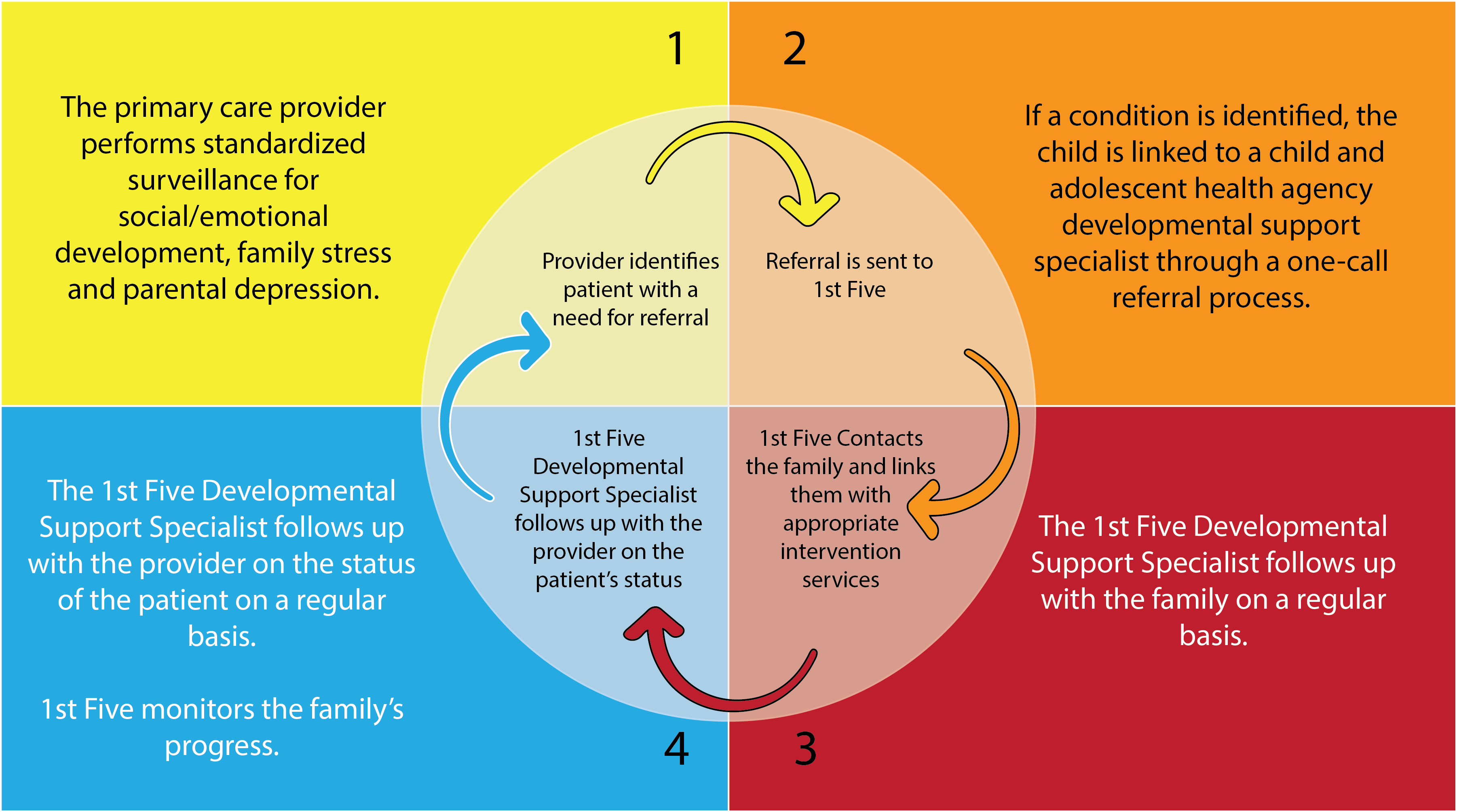Information for Primary Care Providers
Have you ever...
- Considered adding developmental screening to your well-child visits but aren’t sure how to get started, when to screen, or what tools to consider using?
- Been concerned about a child’s development, but not been able to screen them for developmental delay due to lack of time, competing healthcare priorities, or access to standardized screening tools?
- Wanted to make a referral for a patient but didn’t have the time, or staff resources, and weren’t sure what resources were available to identify a best fit service?
- Made a referral but wasn’t sure if the client was actually connected to the service, and/or were unaware of the referral outcome or progress?
- Been concerned that parental stress may be negatively impacting the current and future social and emotional development of a child you are seeing?
Iowa's 1st Five Healthy Mental Development Initiative serves as a national model for continued investment in children's mental health. Research tells us that a significant portion of young children are not receiving adequate surveillance and developmental screening. 1st Five assists medical practices in implementing recommended surveillance and developmental screening tools. When developmental or behavioral concerns, family stress or caregiver depression are identified by a child's primary care provider through surveillance and developmental screening processes, the provider completes the 1st Five Referral Form and sends the referral to their local 1st Five agency. A 1st Five Developmental Support Specialist then assists in linking the referred child to appropriate early intervention services. Once the client is connected to services, the Developmental Support Specialist follows up with the referring physician regarding the status of the referral. Public and private providers partner to design a process for assessment, referral and follow-up that effectively and efficiently assures children receive needed services.

Early identification and intervention with developmental concerns and family risk factors lead to improved outcomes for the individual child and family, as well as considerable savings to society over the long term, with the biggest savings from decreased criminality in adulthood. Several national studies have demonstrated that every dollar invested in early childhood yields between $3-$17 in return. The RAND group estimated a government savings of $18,611 per child who underwent early intervention in the Elmira Prenatal / Early Infant Project, and a savings of $13,289 per child for individuals receiving intervention in the Perry Preschool Project (figures in 1996 dollars). For further information on the economic return from early childhood investments, see First Years First.
1st Five Provider Video Series
Resources for Implementing Developmental Surveillance and Screening